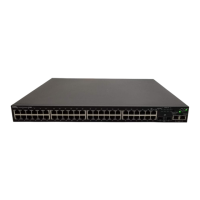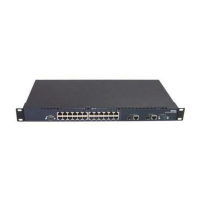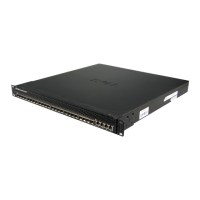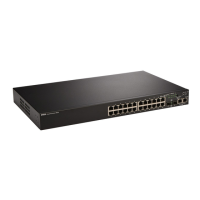122 Multicast
DVMRP
The Distance Vector Multicast Routing Protocol (DVMRP) is one of several multicast routing protocols
you can configure on the switch (PIM-SM and PIM-DM are the others). Note that only one multicast
routing protocol (MRP) can be operational on a router at any time.
DVMRP is an interior gateway protocol; i.e., it is suitable for use within an autonomous system, but not
between different autonomous systems.
DVMRP is based on RIP: it forwards multicast datagrams to other routers in the AS and constructs a
forwarding table based on information it learns in response. More specifically, it uses this sequence.
• A new multicast packet is forwarded to the entire multicast network, with respect to the time-to-live
(TTL) of the packet.
• The TTL restricts the area to be flooded by the message.
• All routers that do not have members on directly-attached subnetworks send back
Prune messages
to
the upstream router.
• The branches that transmit a prune message are deleted from the delivery tree.
• The delivery tree which is spanning to all the members in the multicast group, is constructed in the
form of a DVMRP forwarding table.
CLI Example
The following example configures two DVMRP interfaces. First, this example configures an OSPF
router
1
and globally enables IP routing and IP multicast. IGMP is globally enabled so that this router can
manage group membership information for its directly-connected hosts (IGMP may not be required
when there are no directly connected hosts). Next, DVMRP is globally enabled. Finally, DVMRP, IGMP,
and OSPF are enabled on several interfaces.
console#configure
router ospf
router-id 3.3.1.1
exit
ip routing
ip multicast
ip igmp
ip dvmrp
interface vlan 15
routing
ip address 3.3.3.1 255.255.255.0
ip dvmrp
ip igmp
ip ospf area 0
exit
interface vlan 30
1. OSPF configuration is added as a unicast protocol for illustration purposes; static unicast routing could also be
configured.
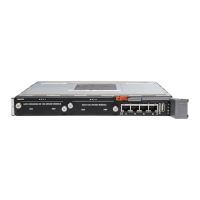
